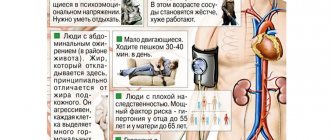It would seem, what do the kidneys have to do with it, if in our body it is the heart that plays the role of a pump that pumps blood? But since pressure is a derivative of the work of three interdependent components, the heart, vascular tone and kidneys, in the process of evolution it so happened that the function of the pressure regulator went to the kidneys. Otherwise, they would not be able to filter the liquid entering the human body.
When this function is disrupted, the pressure drops, a large amount of a special substance, renin, begins to enter the blood, which is converted into angiotensin, which has the ability to cause vasoconstriction and stimulate the production of the adrenal hormone aldosterone. This hormone is capable of retaining sodium and water in the body, the level of circulating blood no longer corresponds to the volume of the vascular bed, which causes renal hypertension.
Causes
Renal hypertension is classified as secondary (symptomatic) hypertension. This kidney pathology occurs in 7-10% of cases of increased blood pressure. The cause of the condition can be any kidney disease:
- fibromuscular dysplasia of the renal artery;
- polycystic kidney disease;
- atherosclerosis, thrombosis, compression of the renal artery;
- nephropathy;
- kidney malformations;
- glomerulonephritis;
- systemic connective tissue diseases;
- kidney amyloidosis;
- chronic pyelonephritis and other pathologies that can cause changes in the structures of the kidneys.
Very often, renal hypertension occurs in combination with diabetes mellitus and other diseases of the endocrine system. Quite often, the development of renal hypertension occurs while taking certain medications.
Symptoms of renal hypertension
Since renal hypertension, as a rule, occurs against the background of kidney damage due to some disease, the symptoms will be combined with signs of the underlying pathology. A characteristic clinical sign of the disease (in addition to an increase in blood pressure) is a persistent increase in lower (diastolic) pressure.
In addition, hypertensive kidney disease is accompanied by the following symptoms:
- pain in the lumbar region,
- urinary disorders (polyuria),
- periodic increase in body temperature,
- constant thirst,
- increased fatigue,
- general weakness,
- swelling,
- headache,
- changes in urine: microhematuria, proteinuria, etc.
A regular increase in lower (diastolic) pressure, in addition to the development of renal and heart failure, as well as the occurrence of cerebrovascular accidents, is fraught with severe damage to the arteries and hemorrhages in the retina.
Therefore, it is extremely important to diagnose the disease as early as possible, because due to the complexity of the mechanism for regulating renal pressure, this pathology is very difficult to treat and quickly takes a malignant course.
There is a very direct dependence. On the one hand, arterial hypertension itself worsens the condition of the kidneys over time. On the other hand, various kidney diseases can cause increased blood pressure.
How to recognize kidney diseases that can lead to arterial hypertension?
Chronic inflammatory kidney diseases can occur against the background of previous diseases of the urinary tract. Many infections (frequent sore throats, sore teeth, inflammation of the genital organs in men and women can lead to kidney pathology.
A common cause of chronic kidney disease (pyelonephritis) can be kidney stones. It can be recognized by attacks of renal colic (lower back pain, difficult and painful urination, red color of urine when a stone is passed). Changes appear in urine and blood tests. Exacerbations of chronic renal diseases lead to disruption of their function, and renal failure gradually develops.
Early detection of kidney disease allows for timely treatment.
Can any medications negatively affect the kidneys?
Some painkillers and antipyretic drugs, when used for a long time, can worsen kidney function (for example, paracetamol, analgin). If you have kidney disease, you should be careful with the so-called non-steroidal anti-inflammatory drugs (brufen, diclofenac, aspirin, etc.), which are often used for radiculitis and joint diseases.
The dose of certain antibiotics should be set taking into account existing renal dysfunction. The use of these medications must be discussed with your doctor.
Maybe only high blood pressure worsens the condition of the kidneys, and with moderate arterial hypertension the kidneys do not suffer?
Arterial hypertension of any severity worsens the prognosis of the disease and accelerates the development of renal failure.
A direct connection has been proven between blood pressure levels and the development of chronic renal failure. Severe forms of arterial hypertension lead to renal failure within several years, and with moderate arterial hypertension, atherosclerotic changes in the kidneys develop more slowly. So, with any increase in blood pressure, the kidneys should be treated with extreme caution.
It should be borne in mind that scientists have established the following relationship: the level of systolic (“upper”) blood pressure is a more significant predictor of chronic renal failure than the level of diastolic (“lower”) blood pressure.
What does the appearance of protein in urine tests indicate?
The excretion of protein in the urine and its quantity is an important sign by which one can judge the deterioration of the kidneys. If protein excretion in urine exceeds 300 mg/day, this is evidence of an unfavorable prognosis of the disease. Doctors call an increase in protein in the urine proteinuria. It has been established that proteinuria, regardless of other possible causes, is a risk factor, that is, it increases the risk of mortality from cardiovascular diseases.
Is it possible to hope that with a decrease in blood pressure, the excretion of protein in the urine will simultaneously decrease?
Such a relationship exists: long-term normalization of blood pressure is accompanied by a simultaneous decrease in proteinuria and prevents the development of chronic renal failure.
Many years of research by scientists have made it possible to establish the level to which blood pressure should be reduced in patients suffering from chronic kidney disease in order to prevent the development of chronic renal failure.
This level depends on the degree of protein loss in the urine: with proteinuria more than 1 gram per day, it is recommended to maintain blood pressure below 125/75 mm Hg; with proteinuria less than 1 gram per day - below 130/80 mm Hg.
What is the danger of chronic renal failure? How does she show herself?
If kidney disease is not treated promptly, chronic renal failure gradually develops and progresses. The kidneys stop performing their function of excreting urine. There is an accumulation of nitrogen metabolic products (nitrogenous waste) in the blood, which causes self-poisoning of the body with waste products from its vital activity.
Most patients have arterial hypertension, which further aggravates the course of the disease.
In such severe cases, a necessary measure is blood purification using hemodialysis (artificial kidney machine). In some patients, it is necessary to resort to kidney transplant surgery. These measures are associated with large material costs and are not publicly available.
All of the above shows how important it is to take care of your kidneys and use all available measures to prevent the development of chronic renal failure.
How to prevent the development of chronic kidney disease?
First of all, you should promptly treat colds, sore throats, and inflammation of the bladder, and often seek help from a dentist, urologist, or gynecologist.
If you suspect kidney disease, you should definitely do urine tests and consult a doctor.
What medicinal plants are recommended for arterial hypertension and kidney diseases?
Certain medicinal plants have anti-inflammatory and diuretic effects. These include bearberry leaf (“bear’s ear”), orthosiphon leaf (“kidney tea”), lingonberry leaf, cranberry.
The dosage and duration of use of herbal medicines is determined by the attending physician, taking into account the characteristics of the disease in each individual person.
What is the role of diet and lifestyle in the prevention and treatment of kidney diseases associated with arterial hypertension?
First, you should avoid excessive physical activity. This can worsen kidney condition in some patients.
Secondly, dietary restrictions depend on the nature and severity of kidney damage and must be agreed with a doctor.
Thirdly, it is necessary to reduce salt intake.
Avoid substances and drinks that irritate the kidneys: alcohol, nitrogenous extractives contained in rich meat broths, strong coffee, pickles, marinades and smoked products.
In patients with chronic renal failure, a low-protein diet is used (meat, fish, cottage cheese intake is limited). The decision to reduce protein consumption is made only after consultation with a doctor, since uncontrolled excessive restriction of protein foods can lead to protein starvation of the body.
What medications are used for kidney disease? Are there any features of blood pressure reduction in this group of patients?
The importance and necessity of normalizing blood pressure is beyond doubt. Reducing blood pressure to normal values has two goals. Firstly, it prevents the development of kidney damage, and secondly, it prevents the occurrence of chronic renal failure in patients with existing renal pathology.
Remember: a one-time decrease in blood pressure should not exceed 25% of the initial level, so as not to impair kidney function.
When choosing medications, preference is given to modern long-acting drugs that can protect the kidneys from damage over a long period of time.
The choice of drug is determined by the doctor, based on the characteristics of the disease in each individual person.
Treatment should be long-term and continuous. Self-medication is unacceptable! This can lead to serious complications.
Department of Systemic Hypertension Novella Mikhailovna Chikhladze, Lead. scientific associate, doctor of medical sciences +7(495) 414-65-04
Diagnostics
The “Clinic of Modern Medicine” has a powerful modern laboratory and technical base, which allows you to quickly conduct a comprehensive study and promptly obtain reliable results. The following studies will help determine whether hypertension has a renal component:
- urine tests (general, according to Nechiporenko, bacterioscopy of urinary sediment),
- blood test (general, urea, creatinine),
- Ultrasound, MRI of the adrenal glands,
- excretory urography,
- angiography of the renal arteries,
- radioisotope radiography,
- kidney biopsy.
Differential diagnosis makes it possible to accurately identify pathology, determine the type of hypertension, its stage and severity, which allows the doctor to select the most effective treatment regimen.
Lower blood pressure: why it is important and how to keep it under control
Author:
Zhuravleva Alexandra
2 minutes
55663
The most famous heart study has been going on for more than 70 years and is now following the third generation of people in the town of Framingham. It proves that high systolic pressure is a sure sign of a future heart attack or stroke. But is the second number on the tonometer so insignificant?
In 2021, more than a million adults were studied and it was found that high levels of “lower” pressure also contribute to the prognosis of cardiovascular disaster. It turned out that the second figure is above 80 mmHg. increases the risk of heart attack and stroke in the next eight years almost as much as high blood pressure.
Let us remind you what each indicator is responsible for. Systolic pressure is the force with which oxygenated blood is pushed out of the heart and throughout the body. Diastolic is the pressure of blood on the walls of blood vessels at the moment when the heart fills and rests between beats.
Blood pressure standards were revised in 2021 and today numbers above 119/79 are already considered the beginning of hypertension. It turns out that the ideal pressure is between 90/60 and 120/80.
While systolic blood pressure rises with age, diastolic blood pressure typically rises in people under 50 and then reverses. “Upper” pressure jumps during emotional experiences, sports, or after coffee and a cigarette. The heart begins to beat more often and eject blood - this is how the first number on the tonometer increases at the moment of systole.
As long as the vessels remain healthy and elastic, the pressure between heartbeats remains within the normal range. Once the capillaries become stiff and narrow, there is little room for blood. It puts intense pressure on the walls of blood vessels, even when it flows calmly at the moment of relaxation of the heart - this is how the diastolic indicator increases.
A one-time increase in blood pressure in response to stress or physical activity is not considered a disease. But if values above normal persist for several weeks, it’s time to sound the alarm. Hypertension can develop either separately, only systolic or only diastolic, or simultaneously according to two indicators.
The condition is especially dangerous when the difference between the upper and lower pressure becomes minimal. This is called pulse pressure, and is normally around 35-50 mmHg. For example, at 120/80, the pulse rate will be 40 (120 minus 80). In some situations, the pressure during heart contraction approaches the values at the moment of relaxation. For example, when fluid accumulates in the chest and the heart is compressed, it does not have enough acceleration to pump at full strength. Blood does not go to distant areas and there is a risk of brain damage due to oxygen deprivation.
Fluid accumulation in the pericardium is an unusual event. However, isolated diastolic hypertension can bring the “lower” pressure closer to the “upper” one. Sometimes it occurs due to damage to the kidneys or thyroid gland, but in most cases the cause cannot be determined. It is certainly known that high diastolic pressure with normal systolic pressure is more common in young people under 40-45, especially if they are overweight.
Fortunately, an increase in “bottom” blood pressure alone is not as strongly associated with the risk of cardiovascular outcomes as is the case with general or isolated systolic hypertension. The bad news is that, following the high numbers of the “lower” pressure, the “upper” pressure will almost certainly rise within 10 years.
Isolated hypertension is not always amenable to treatment with tablets. Medicines lower both indicators, upper and lower, and too low pressure, less than 90/60, threatens the same oxygen rob. The good news is that while there are no other problems, other than high numbers on the tonometer, non-drug therapy can save you. It includes the DASH diet and 150 minutes per week of moderate cardio exercise.
Any hypertension can occur without symptoms and turn out to be an accidental finding at the next check-up. Only a doctor can tell you that there are no changes in the heart, kidneys and retina, and therefore high blood pressure can be treated without pills. To do this, urine and blood tests are taken, an ultrasound of the heart, an ECG and an examination of the fundus are performed. Even if the doctor decides that you cannot do without medications, remember that it is better to live actively “on pills” than to be proud of their absence in a bed in a cardiac intensive care unit.









